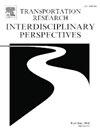Predicting nighttime black ice using atmospheric data for efficient winter road maintenance patrols
IF 3.9
Q2 TRANSPORTATION
Transportation Research Interdisciplinary Perspectives
Pub Date : 2025-01-01
DOI:10.1016/j.trip.2024.101299
引用次数: 0
Abstract
During winter, hazardous black ice can form anywhere on roads under various weather conditions, including fog, frost, rime ice, freezing rain, and snow. To prevent accidents caused by black ice, nighttime road maintenance patrols have been conducted in Korea since December 2019, following a tragic accident on slippery pavement. However, patrolling the entire road network on a daily basis requires substantial human and equipment resources. To address this issue, an approach to identify high-risk road sections and prioritize patrolling efforts on these selected sections needs to be established. The main challenge lies in identifying dangerous sections where road weather sensors have not been deployed. One potential solution is to forecast nighttime black ice using atmospheric data. In this context, the present study investigates machine learning techniques, including Random Forest, CatBoost, and Deep Neural Networks, for forecasting nighttime icing on rural highways in Korea. The models use air temperature, humidity, dew point temperature, precipitation probability, and wind speed as input variables. Data analysis indicates that nighttime icing occurs when the atmospheric temperature falls below 4 °C and the relative humidity exceeds 75 %. Furthermore, black ice is more likely to form when temperatures are rising rather than falling, particularly in the absence of precipitation. To evaluate the predictive models, reference data were obtained based on the physical principle that black ice forms when the road surface temperature drops below both the freezing point and the dew point temperature. The results show that all the models achieved similar performance, with an accuracy of approximately 85–90 %. The novelty of this study lies in predicting road icing using only readily available atmospheric data, which eliminates the need for costly road weather sensors. As a result, this approach allows for more efficient nighttime maintenance patrols, reducing resource usage by up to 60 % while still ensuring road safety.
求助全文
约1分钟内获得全文
求助全文
来源期刊

Transportation Research Interdisciplinary Perspectives
Engineering-Automotive Engineering
CiteScore
12.90
自引率
0.00%
发文量
185
审稿时长
22 weeks
 求助内容:
求助内容: 应助结果提醒方式:
应助结果提醒方式:


